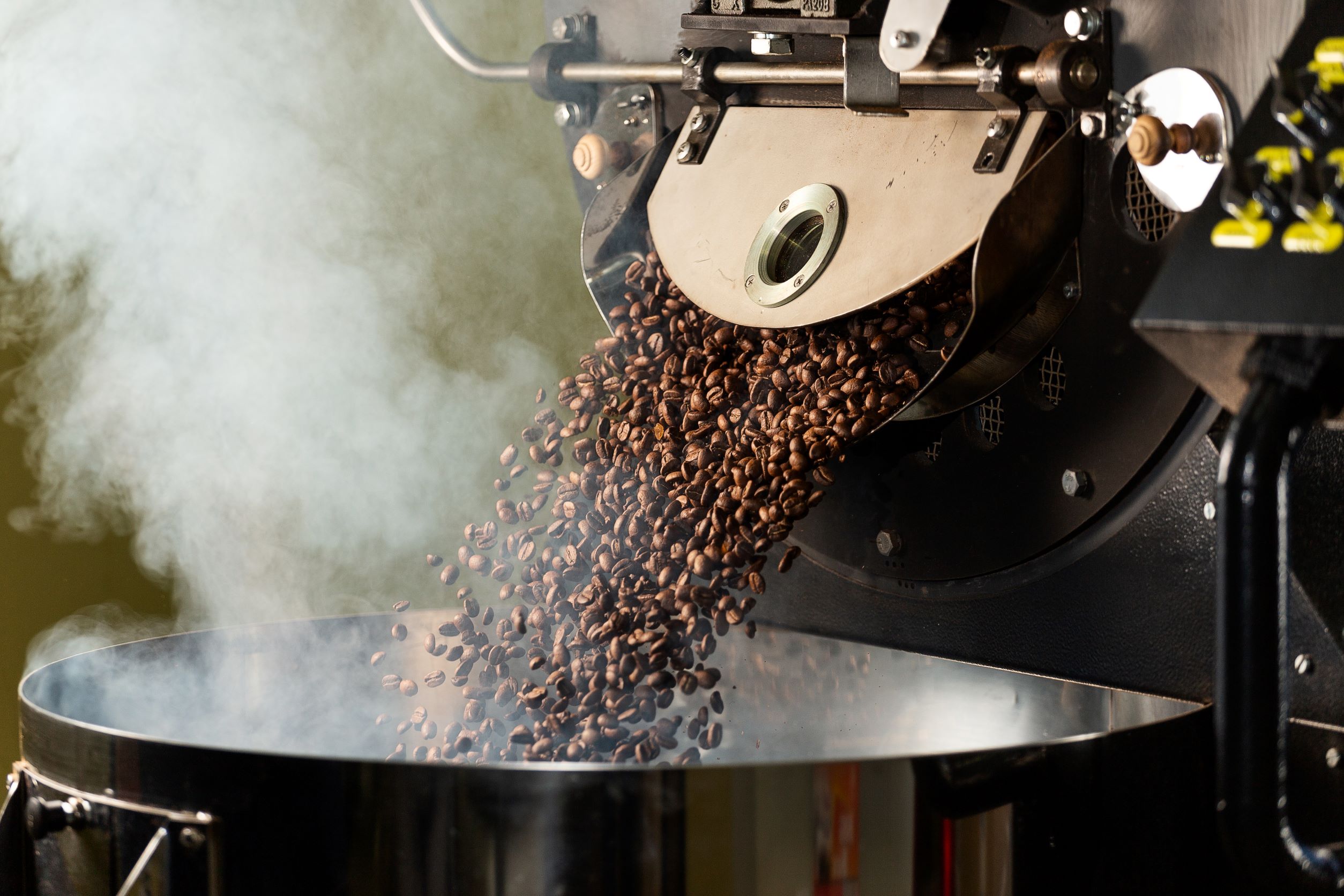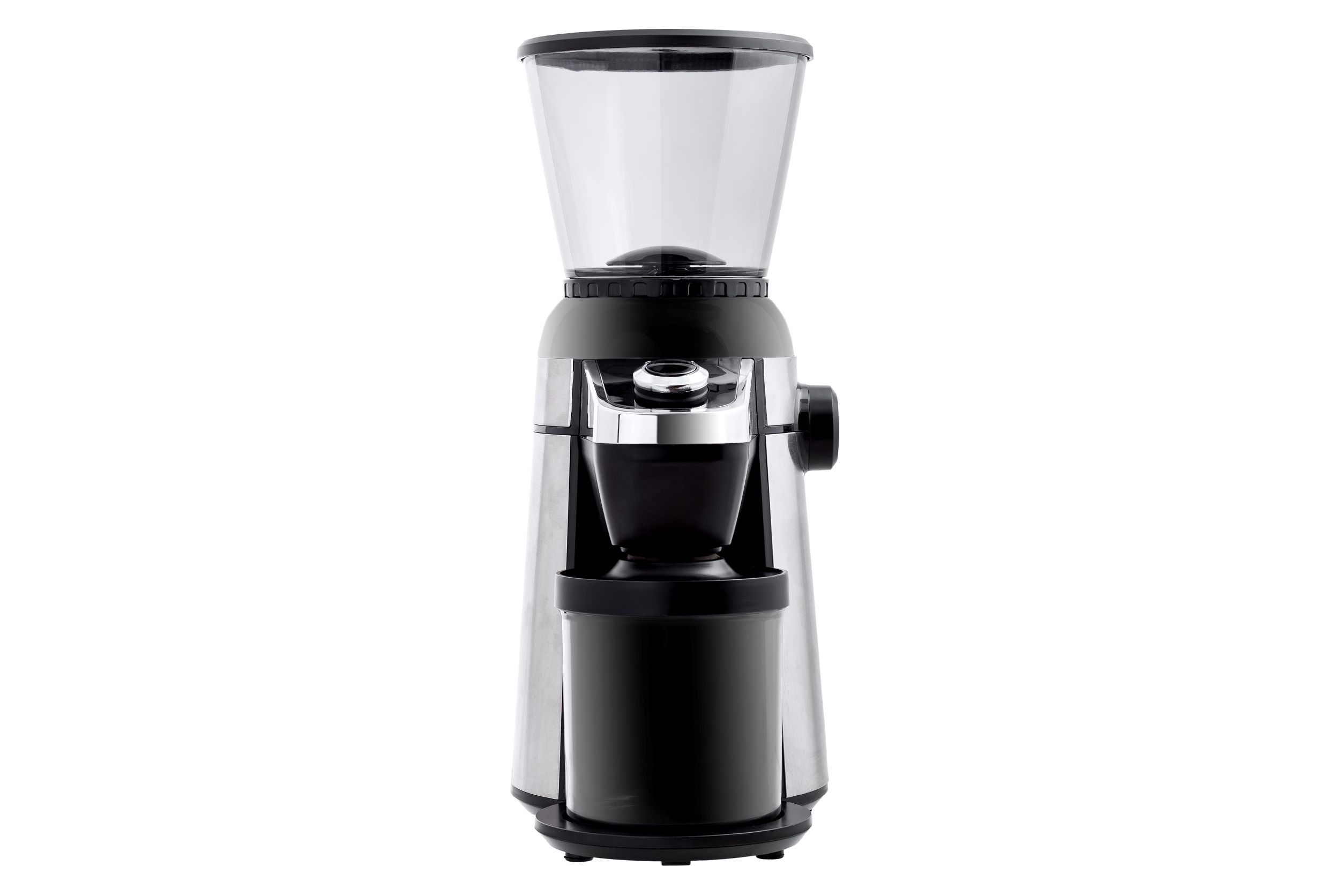
Coffee roasting is a heating process that brings out the aroma and flavor of coffee beans by letting them go through complex chemical reactions under high temperature. The raw green coffee beans are turned into darker beans that are crunchy, lighter in weight and better in smell. Coffee beans can be simply roasted on a cast iron pan, inside an oven and in a popcorn popper, but the most common ways to do it are drum roasting and fluid bed roasting. We will introduce these two types of coffee roasters and discuss their differences in this article.

Drum coffee roasters
This is the most common coffee roasters, especially in commercial settings. The main part of this roaster is the rotating cylindrical drum. Heat source can come underneath the drum or through a conduit at the center. Drum coffee roasters can be powered by either electricity or gas.
Drum roasting transfers heat to the beans in two ways: 1) conduction through the surface of the drum and 2) convection through the hot air inside the drum. Since the coffee beans are touching a hot surface, scorching may occur, especially when too much heat is applied, or the beans are pushed against the interior of the drum by a high rotating speed.
Some drum roasters are designed to allow more convection heating. One of them is perforated drum roaster, which consists of small pores on the drum to increase airflow. Double wall drum is another design to use air in-between the walls as insulation, thus reducing scorching of the beans. Both roasters improve the consistency of roasting and result in a more even roast.
As drum roasting transfers heat slowly, it is a more time-consuming process, like slow cooking. But coffee roasted this way tends to have a richer and denser flavor and mouthfeel, which means it is less distinctive but more complex. So drum roasters are considered more suitable for a darker roast.

Fluid bed coffee roasters
This is a relatively modern invention developed by Michael Sivetz in the 1970’s. It is featured by a tall cylinder which allows hot air to flow and deliver heat through convection. As streams of air are blown through the coffee beans, making them circulating or hovering in the middle of the cylinder, it looks like a fluid bed of coffee. Because this roasting technology has limited capacity, it is not as common as drum roasting in the commercial world.
Fluid bed roasting relies solely on convection, so scorching rarely occurs. It tends to produce a more consistent and even roast with a shorter time, since air roasting has a higher heat transfer rate. Also, as chaff doesn’t remain and get burnt in the drum, the roast is cleaner and less smoky.
Fluid bed roasted coffees have an opposite flavor profile when compared with drum roasted coffees. They usually have a higher acidity, which means a brighter taste. If you like light roasted coffees which carry more distinctive flavors and less body, choose fluid bed roasting. It is good at producing a clean, sweet and consistent cup.
Some people find that coffee beans tend to be dry after fluid bed roasting. It can be explained as a large amount of hot air passes through the beans, carrying moisture away. As a result, the coffee roast will lose some of its complexity and flavours, and taste more flat than a drum roast.


